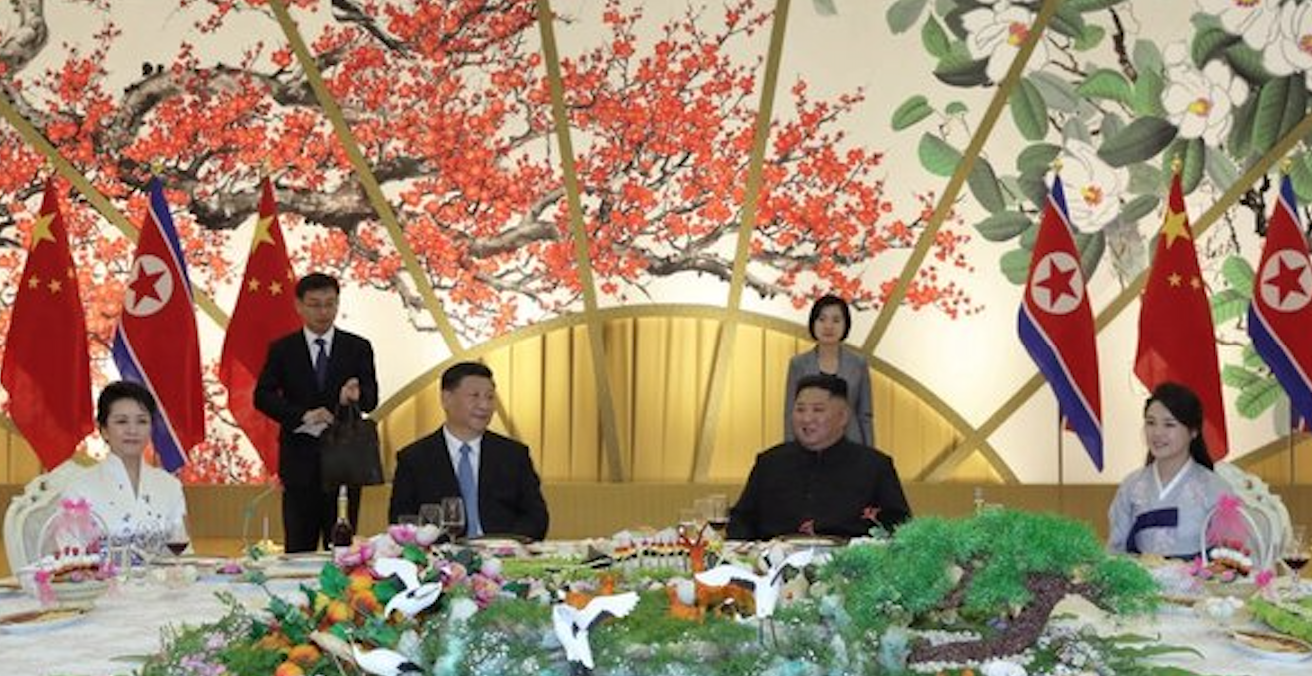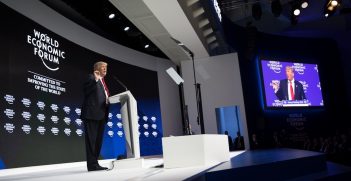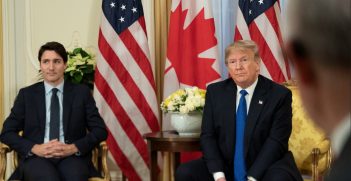The Wooing of Kim Jong Un: Love Letters and Lavish Banquets

Nuclear negotiations with North Korea are developing at head-spinning speed. After his shock at the breakdown of talks in Hanoi, Kim has shifted his attention to North Korea’s traditional allies, Russia and China, but he’s still on Donald J. Trump’s mailing list.
What a difference a week makes when it comes to diplomacy with North Korea.
Earlier this month, one year after the dramatic Singapore Summit of June 2018, nuclear negotiations with North Korea appeared stuck in a standstill. Pyongyang was giving friends and foes the cold shoulder as leader Kim Jong Un remained in retreat following his failed second summit with US President Donald Trump in Hanoi in late February.
Then, in the span of just a few heady days from 20 June to 22 June, Kim not only hosted Chinese President Xi Jinping in a state visit that granted the young North Korean leader tremendous legitimacy but also revealed the exchange of another set of “love letters” with Trump.
In a flash, we went from fears of provocation to the first movement on the moribund nuclear negotiations with North Korea in months. With Trump heading to Asia for the G20 summit and high-level meetings with Xi, Japan’s Shinzo Abe and South Korea’s Moon Jae-in, we’re likely to hear calls for a third Trump-Kim summit as regional leaders seek to build momentum for renewed talks with North Korea.
And despite the head-spinning speed of developments, none of this comes as a surprise. Here’s why.
Kim’s Shock at the Hanoi Summit Breakdown
The nuclear negotiations in Hanoi Summit were doomed to fail because Kim and Trump do not share the same definition of denuclearization.
In Singapore, the two men pledged in their sparse summit declaration to “work toward (the) complete denuclearization of the Korean Peninsula.” But the reading of that phrase is different in Pyongyang than it is in Washington. Trump envisions Kim unilaterally giving up his nuclear weapons in exchange for sanctions relief and other concessions. Kim, however, interprets the “complete denuclearization of the Korean Peninsula” to mean Pyongyang will give up its weapons only when the United States relinquishes its nuclear protection of South Korea.
Kim’s goal is to force Washington to accept and acknowledge North Korea as a nuclear weapon state, and then, as a fellow nuclear power, sell off pieces of his program in exchange for concessions: without ever fully giving up his weapons.
And Kim came close. But in the end, Trump walked away. Kim miscalculated Trump’s tolerance for negotiations. That breakdown of talks in Hanoi was a shock to Kim, who had been gambling on the assumption that Trump wanted a propaganda victory more than he wanted denuclearization.
Saving Face After Hanoi
Kim, forced to return home empty-handed from a high-profile journey, retreated to Pyongyang to rethink his strategy. But he wasn’t giving up on nuclear negotiations with the United States. When asked about the impasse in Seoul earlier this month, I assured observers that North Korea’s retreat was a face-saving move, and that it was only a matter of time before Pyongyang would seek to get talks back on track.
The bottom line is this: sanctions are taking a toll on North Korea’s economy.
North Koreans are adept at coping with deprivation. They are survivors, having made it through a devastating famine in the 1990s and decades of sanctions for the regime’s nuclear ambitions. The North Korean people are told to blame the United States, not their leadership’s provocative nuclear ambitions, for the lack of medicine, clean water, electricity and food.
They know, then, that the United States is still locked in a technical state of war with their country and has the power to change their quality of life. And Kim knows that his regime’s relationship with Washington has the power to change the course of his leadership. His failure to return home from Hanoi with a historic nuclear deal would have been devastating for elites anxious to move away from a life of sacrifice, economic hardship and international isolation.
Back to Traditional Allies
Kim may not have given up on negotiations with the United States, but he wanted to give himself options, politically and economically. Kim needed to show his people that despite the setback in Vietnam, he remains relevant on the international stage. He needed to show that North Korea has other lifelines. And he wanted economic help.
In the wake of Hanoi, Kim shifted his attention to North Korea’s traditional allies, Russia and China. He had mixed success with his April summit with Vladimir Putin in Vladivostok. There was plenty of opportunity for propaganda — photo opportunities were designed to replicate similar train journeys his father made to Siberia as a way to enforce a sense of tradition and longstanding friendship — but Kim came away with little concrete economic help from Putin.
But Russia had long ago receded to the background, providing relatively little economic help to North Korea in the post-Soviet era. It is China that has stepped in as North Korea’s main economic benefactor over the past decade. Understandably, Beijing’s decision in 2016 to side with the US-led “maximum pressure” campaign of UN sanctions, instead of protecting North Korea, shook the elites of Pyongyang, who know how integral trade and fuel from China are in keeping them fed, clothed and housed.
Kim needed the propaganda boost that a visit to Pyongyang by Xi could offer, if only to reassure his people that their main benefactor still has their back. Xi’s June 20-21 state visit was the first to Pyongyang by a Chinese president in 14 years, and no expense was spared for photo ops that will be used to buttress Kim’s legacy. It was strategic timing by both Kim and Xi, who seized the opportunity to assert himself as a champion of peace and to underline China’s role in international diplomacy.
As with Putin, Kim didn’t get quite as much economic help as he had hoped from Xi, who was mindful of his upcoming trade talks with Trump. Instead, Chinese state media is promoting tourism to North Korea as a way to help the neighboring nation economically without violating UN sanctions.
Trump Jumps into the Fray
The flurry of diplomacy has had the intended effect of creating political momentum around negotiations with North Korea.
Not to be outdone, Trump has jumped into the fray, revealing that he and Kim have engaged in yet more letter-writing, with the June 12 anniversary of the Singapore Summit and Trump’s June 14 birthday serving as occasions meriting correspondence. In contrast, in 2006 Kim’s father, Kim Jong Il, fired missiles as “birthday gift” to then-US President George Bush.
These letters appear to be the first substantial contact between Washington and Pyongyang since Hanoi. But I would argue that the messaging happened earlier, in the form of tweets and missile launches. North Korea’s launch of apparent short-range missiles in May served as a kind of test of Trump’s position. Would Trump revert to “fire and fury?” He did not, and his willingness to continue taking an avuncular approach to Kim emboldened the North Korean leader to reach out again after three months of silence.
We Need Progress, Not Just Propaganda
Regional leaders, including in North Korea, will spin the movement on talks as a good thing: and it is. But as with the Hanoi Summit, we are getting caught up in the pomp and propaganda, without any real movement on the key issue that remains unresolved: how to define denuclearization. If a third Trump-Kim summit is to be a success, the United States and North Korea must make progress in bridging that gap.
Jean H. Lee is a former journalist who opened the AP’s Pyongyang Bureau. She is director of the Hyundai Motor-Korea Foundation Center for Korean History and Public Policy at the Woodrow Wilson International Center for Scholars.
This article is published under a Creative Commons Licence and may be republished with attribution.





